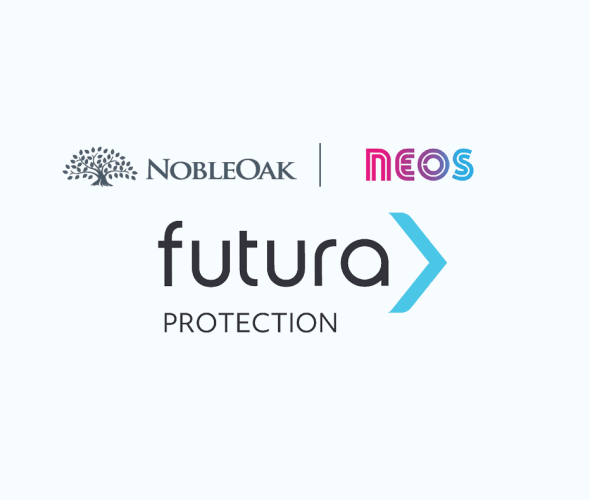Salary Continuance Insurance (SCI) Explained
Sometimes in life, the unexpected does happen. Even if you’re generally fit and healthy, illness and injuries are still possible – affecting your ability to work, among other things.
This is why it’s good to have a plan, so that if you do become unwell, you won’t need to worry about your finances. In this guide, we’ll provide information about salary continuance insurance versus income protection insurance and we compare the various advantages of each.
Key takeaways:
- Salary continuance insurance is generally only available through superannuation funds
- Income protection insurance can be acquired outside superannuation through independent insurance providers such as NobleOak
- The key advantage of income protection insurance is it’s generally more customisable
- Your eligibility for both types of insurance largely depends on your age and employment status
Importantly, this type of insurance can have tax (and potentially superannuation) consequences. You should speak to a professional adviser about this.
What is salary continuance insurance (SCI)?
Salary continuance insurance (also known as ‘salary insurance’ or ’salary protection insurance‘) is a type of cover that’s held in a superannuation fund. If you have this type of insurance, and you suffer an injury or illness that affects your ability to work, you may be eligible to receive financial benefits.
The purpose of salary continuance insurance is to provide support when you need it most – helping to mitigate the financial strain of not being able to earn an income. This makes it possible to focus on recuperating and getting well, without worrying about money.
Because salary continuance insurance is held in your super fund, the insurance premiums will be paid out of your super balance (as opposed to making direct payments to the insurance provider). In the event of a claim, benefits will be paid first to your super fund before they’re released to you.
Superannuation rules can be complex – for more information see the ATO guide
Salary continuance insurance vs income protection insurance
The key similarity between salary continuance insurance and income protection insurance is that both forms of cover provide a source of income if you can’t work due to health reasons. However, there are a number of important differences.
Here, we’ll provide a salary protection comparison, looking at the similarities and differences between these two insurance types:
| Salary Continuance (inside superannuation) | Income Protection (outside superannuation) | |
| Availability | It is commonly offered as an option within many superannuation funds, however in certain instances, you can purchase salary continuance insurance directly from some insurance companies. | Income protection insurance can be purchased outside superannuation directly from a number of life insurance companies. Some super funds do offer it, but in this instance, it’s generally referred to as ‘salary continuance insurance’. |
| Maximum Benefit Period | Most commonly, this type of insurance provides coverage until the policyholder reaches retirement age. Some policies may have maximum benefit periods of 2-5 years, often as a more affordable option. | Some policies provide benefits for up to 2 years, but there are also longer-term options with benefits paid for up to 5 years. Many policies offer coverage until the insured person reaches retirement age as well (for example NobleOak has a policy which provides eligible benefits up to age 65). |
| Flexibility | Typically covers a set percentage of your salary, usually up to 75%. In most cases, salary continuance insurance offers fewer options for adding riders (such as trauma cover and total and permanent disability cover) compared to stand-alone policies. | Usually offers more flexibility to choose the exact percentage of income to be covered, but usually up to a maximum of 70%. Also provides an option of a greater variety of optional riders (such as trauma cover and total and permanent disability cover). |
| Premium Price | Often benefits from group pricing, which can lead to lower premiums as the risk is spread across many members. | Premiums from some direct life insurers who offer fully underwritten protection such as NobleOak Life Insurance are based on detailed underwriting (taking into account individual factors such as age, health, occupation, and lifestyle) which can lead to more tailored coverage. |
NobleOak provides Income Protection Insurance for Australians aged between 18-55, who work at least 20 hours per week. If you become unwell and unable to work, you’ll receive a monthly benefit for the benefit period you selected to help you stay on top of your bills and assist with living expenses (if your claim meets eligibility requirements).
You can learn more about what we offer in our article: Income Protection Insurance – what you should know before taking out cover.
Eligibility for salary continuance insurance vs income protection
Salary continuance insurance and income protection insurance can have differences in eligibility criteria. Here, we’ll compare the key eligibility requirements for salary protection cover and income insurance, so you can gain a better understanding of the various benefits:
| Salary Continuance (inside superannuation) | Income Protection (outside superannuation) | |
| Age Requirements |
|
|
| Employment Status |
|
|
| Occupation |
|
|
It’s important to bear in mind that eligibility for salary continuance insurance is tied to membership in a superannuation fund that offers this type of cover as a member benefit. Income protection insurance, on the other hand, must be applied for directly with an insurance company and is available outside superannuation.
The process of applying is also different for salary continuance insurance and fully underwritten income protection insurance. Salary continuance insurance often includes automatic acceptance within superannuation, while standalone income protection insurance requires detailed underwriting.
Will you need to take a medical exam when applying?
When applying for salary continuance insurance through superannuation, a medical exam is generally not required for standard coverage. This allows members to obtain coverage without extensive health assessments. However, for higher coverage amounts, or if your application falls outside the standard acceptance criteria, additional medical information may be required.
In contrast, applying for fully underwritten income protection insurance usually involves a more detailed underwriting process, which often includes a medical exam. Insurers usually assess your health, medical history, lifestyle, and occupation to determine eligibility and premium rates.
You can learn more about this in our article: What Is a Life Insurance Medical Examination (And What Can I Expect During Mine)?
The benefits period for salary continuance insurance vs income protection
The benefit period for these two types of insurance can vary significantly. For salary continuance cover offered through superannuation, the benefit period is often predefined and commonly extends up to age 65, which aligns with the typical retirement age. Some policies may offer shorter benefit periods, such as 2 or 5 years, depending on the specific terms set by the superannuation fund.
In contrast, income protection insurance offers more flexibility in choosing the benefit period. Policyholders can typically select from a range of options, including short-term benefit periods of 2 or 5 years, or long-term coverage extending up to age 55 and beyond. This customisation allows you to tailor your coverage to your specific needs and financial circumstances.
The ability to choose a longer benefit period can provide extended financial security, ensuring continuous income replacement until retirement age, if necessary.
What if your illness or injury extends beyond the salary continuance period?
For both salary continuance insurance and income protection insurance, the benefits will usually end once the maximum benefit period has been reached. In most situations, you won’t receive payments beyond the benefit period as defined in your policy.
In such cases, you might need to rely on other forms of support, such as personal savings, government disability benefits, or long-term disability insurance (if you have it). You might also be able to access your superannuation funds early on the grounds of financial hardship or permanent incapacity.
Waiting periods for salary continuance insurance vs income protection
A waiting period is the amount of time you need to wait after becoming unable to work (due to health issues) before you start receiving benefit payments.
For salary continuance insurance, the waiting periods are typically predefined and often range from 30 to 90 days. Some policies may have longer waiting periods depending on the specific terms set by the superannuation fund. The length of waiting period can affect the premium cost; shorter waiting periods generally lead to higher premiums.
Income protection insurance generally offers more flexibility in choosing the waiting period. Options can range from as short as 14 days to as long as 2 years. This allows you to tailor your coverage to better match your financial situation and needs. This flexibility is one of the key advantages of income protection insurance over salary continuance insurance.
The cost of salary continuance insurance vs income protection
Because superannuation funds utilise group pricing methods (where risk is spread across a large number of group members), salary continuance insurance premiums tend to be cheaper. Additionally, salary insurance often has standardised coverage options and automatic acceptance up to certain limits, which further helps keep costs down.
By comparison, income protection insurance premiums tend to be higher. This is due to the higher degree of customisation for these types of policies, and the ability to select specific benefit periods, waiting periods, and additional features.
Are salary continuance payments taxed?
The payments you receive from salary continuance insurance (through your super fund) are generally considered taxable income. They are taxed at your marginal tax rate because they replace your regular income. Therefore, these benefit payments are not tax-deductible but are included in your assessable income for tax purposes.
Similarly, the benefit payments you receive from an income protection insurance policy are also considered taxable income. These payments are intended to replace lost income due to illness or injury and are therefore taxed at your marginal tax rate. Like salary continuance benefits, these payments are not tax-deductible but are treated as taxable .
Award-Winning Income Protection Insurance
NobleOak has been awarded Direct Life Insurer for the past five years, thanks to our outstanding value and service. As a trusted Australian insurance provider, we take pride in providing affordable insurance solutions – providing help when you need it most.
If you’re interested in Income Protection Insurance, please start a quote or contact us today.
Disclaimer: Any financial product advice is general in nature only and does not take into account your individual circumstances, objectives, financial situation, or needs. Before acting on it, please consider the appropriateness of the information, having regard to those factors. Any third-party websites or tools referred to are subject to their own terms and conditions and NobleOak Life Limited makes no representation or warranty as to any information on those websites. Persons deciding whether to acquire or continue to hold life insurance issued by NobleOak Life Limited should consider the relevant Product Disclosure Statement and Target Market Determination for the product. Please also consider NobleOak Life Limited’s Financial Services Guide. NobleOak Life Limited ABN 85 087 648 708 AFSL 247302.
Related Insights


Income Protection Insurance & Superannuation: Inside vs Outside Superannuation


NobleOak launches new advised product, Futura Protection, in partnership with NEOS
Help protect your family with Australia's most awarded direct life insurer seven years running (2019 - 2025)



